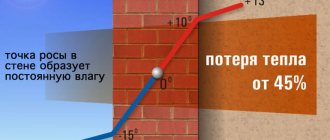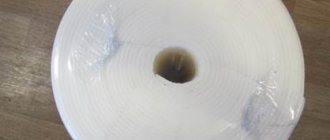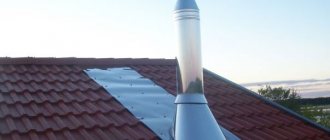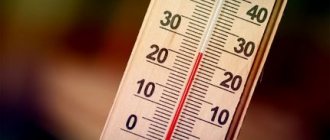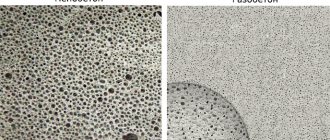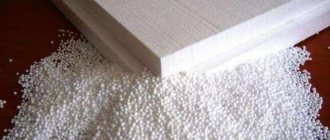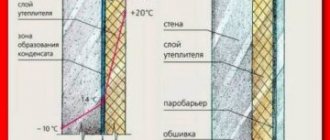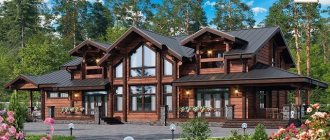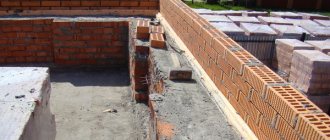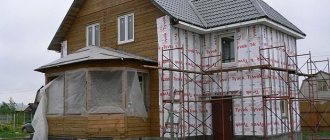Each of us has repeatedly witnessed the formation of water droplets on surrounding objects and structures. This is explained by the fact that the surrounding air cools over an object brought from frost. Saturation with water vapor occurs, and dew condenses on the object.
The fogging of windows in the apartment has the same nature. The reason windows cry is due to condensation processes, which are influenced by humidity and ambient temperature.
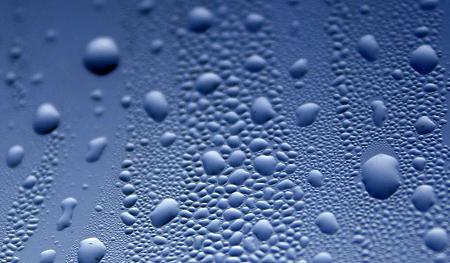
Condensation is closely related to the concept of dew point. For a better understanding of the described phenomena, it is simply necessary to consider this factor in more detail.
Dew point. What is it?
The dew point is the cooling temperature of the surrounding air at which the water vapor that it contains begins to condense, forming dew, that is, it is the temperature of condensation.
This indicator depends on two factors: air temperature and its relative humidity. The dew point of a gas is the higher the higher its relative humidity, that is, it approaches the actual ambient temperature. Conversely, the lower the humidity, the lower the dew point.
Dew point table
The dew point table is very simple to use - hover over it ...
For example: air temperature + 16 ° С, relative air humidity 65%. Find the cell at the intersection of air temperature + 16 ° С and air humidity 65%. It turned out + 9 ° С - this is the Dew Point. This means that if the surface temperature is equal to or below + 9 ° C, moisture will condense on the surface.
For the application of polymer coatings, the surface temperature must be at least 4 ° C above the dew point!
| Air temperature | Dew point temperature at relative humidity (%) | |||||||||||||
| 30% | 35% | 40% | 45% | 50% | 55% | 60% | 65% | 70% | 75% | 80% | 85% | 90% | 95% | |
| -10 ° C | -23,2 | -21,8 | -20,4 | -19 | -17,8 | -16,7 | -15,8 | -14,9 | -14,1 | -13,3 | -12,6 | -11,9 | -10,6 | -10 |
| -5 ° C | -18,9 | -17,2 | -15,8 | -14,5 | -13,3 | -11,9 | -10,9 | -10,2 | -9,3 | -8,8 | -8,1 | -7,7 | -6,5 | -5,8 |
| 0 ° C | -14,5 | -12,8 | -11,3 | -9,9 | -8,7 | -7,5 | -6,2 | -5,3 | -4,4 | -3,5 | -2,8 | -2 | -1,3 | -0,7 |
| + 2 ° C | -12,8 | -11 | -9,5 | -8,1 | -6,8 | -5,8 | -4,7 | -3,6 | -2,6 | -1,7 | -1 | -0,2 | -0,6 | 1,3 |
| + 4 ° C | -11,3 | -9,5 | -7,9 | -6,5 | -4,9 | -4 | -3 | -1,9 | -1 | 0 | 0,8 | 1,6 | 2,4 | 3,2 |
| + 5 ° C | -10,5 | -8,7 | -7,3 | -5,7 | -4,3 | -3,3 | -2,2 | -1,1 | -0,1 | 0,7 | 1,6 | 2,5 | 3,3 | 4,1 |
| + 6 ° C | -9,5 | -7,7 | -6 | -4,5 | -3,3 | -2,3 | -1,1 | -0,1 | 0,8 | 1,8 | 2,7 | 3,6 | 4,5 | 5,3 |
| + 7 ° C | -9 | -7,2 | -5,5 | -4 | -2,8 | -1,5 | -0,5 | 0,7 | 1,6 | 2,5 | 3,4 | 4,3 | 5,2 | 6,1 |
| + 8 ° C | -8,2 | -6,3 | -4,7 | -3,3 | -2,1 | -0,9 | 0,3 | 1,3 | 2,3 | 3,4 | 4,5 | 5,4 | 6,2 | 7,1 |
| + 9 ° C | -7,5 | -5,5 | -3,9 | -2,5 | -1,2 | 0 | 1,2 | 2,4 | 3,4 | 4,5 | 5,5 | 6,4 | 7,3 | 8,2 |
| + 10 ° C | -6,7 | -5,2 | -3,2 | -1,7 | -0,3 | 0,8 | 2,2 | 3,2 | 4,4 | 5,5 | 6,4 | 7,3 | 8,2 | 9,1 |
| + 11 ° C | -6 | -4 | -2,4 | -0,9 | 0,5 | 1,8 | 3 | 4,2 | 5,3 | 6,3 | 7,4 | 8,3 | 9,2 | 10,1 |
| + 12 ° C | -4,9 | -3,3 | -1,6 | -0,1 | 1,6 | 2,8 | 4,1 | 5,2 | 6,3 | 7,5 | 8,6 | 9,5 | 10,4 | 11,7 |
| + 13 ° C | -4,3 | -2,5 | -0,7 | 0,7 | 2,2 | 3,6 | 5,2 | 6,4 | 7,5 | 8,4 | 9,5 | 10,5 | 11,5 | 12,3 |
| + 14 ° C | -3,7 | -1,7 | 0 | 1,5 | 3 | 4,5 | 5,8 | 7 | 8,2 | 9,3 | 10,3 | 11,2 | 12,1 | 13,1 |
| + 15 ° C | -2,9 | -1 | 0,8 | 2,4 | 4 | 5,5 | 6,7 | 8 | 9,2 | 10,2 | 11,2 | 12,2 | 13,1 | 14,1 |
| + 16 ° C | -2,1 | -0,1 | 1,5 | 3,2 | 5 | 6,3 | 7,6 | 9 | 10,2 | 11,3 | 12,2 | 13,2 | 14,2 | 15,1 |
| + 17 ° C | -1,3 | 0,6 | 2,5 | 4,3 | 5,9 | 7,2 | 8,8 | 10 | 11,2 | 12,2 | 13,5 | 14,3 | 15,2 | 16,6 |
| + 18 ° C | -0,5 | 1,5 | 3,2 | 5,3 | 6,8 | 8,2 | 9,6 | 11 | 12,2 | 13,2 | 14,2 | 15,3 | 16,2 | 17,1 |
| + 19 ° C | 0,3 | 2,2 | 4,2 | 6 | 7,7 | 9,2 | 10,5 | 11,7 | 13 | 14,2 | 15,2 | 16,3 | 17,2 | 18,1 |
| + 20 ° C | 1 | 3,1 | 5,2 | 7 | 8,7 | 10,2 | 11,5 | 12,8 | 14 | 15,2 | 16,2 | 17,2 | 18,1 | 19,1 |
| + 21 ° C | 1,8 | 4 | 6 | 7,9 | 9,5 | 11,1 | 12,4 | 13,5 | 15 | 16,2 | 17,2 | 18,1 | 19,1 | 20 |
| + 22 ° C | 2,5 | 5 | 6,9 | 8,8 | 10,5 | 11,9 | 13,5 | 14,8 | 16 | 17 | 18 | 19 | 20 | 21 |
| + 23 ° C | 3,5 | 5,7 | 7,8 | 9,8 | 11,5 | 12,9 | 14,3 | 15,7 | 16,9 | 18,1 | 19,1 | 20 | 21 | 22 |
| + 24 ° C | 4,3 | 6,7 | 8,8 | 10,8 | 12,3 | 13,8 | 15,3 | 16,5 | 17,8 | 19 | 20,1 | 21,1 | 22 | 23 |
| + 25 ° C | 5,2 | 7,5 | 9,7 | 11,5 | 13,1 | 14,7 | 16,2 | 17,5 | 18,8 | 20 | 21,1 | 22,1 | 23 | 24 |
| + 26 ° C | 6 | 8,5 | 10,6 | 12,4 | 14,2 | 15,8 | 17,2 | 18,5 | 19,8 | 21 | 22,2 | 23,1 | 24,1 | 25,1 |
| + 27 ° C | 6,9 | 9,5 | 11,4 | 13,3 | 15,2 | 16,5 | 18,1 | 19,5 | 20,7 | 21,9 | 23,1 | 24,1 | 25 | 26,1 |
| + 28 ° C | 7,7 | 10,2 | 12,2 | 14,2 | 16 | 17,5 | 19 | 20,5 | 21,7 | 22,8 | 24 | 25,1 | 26,1 | 27 |
| + 29 ° C | 8,7 | 11,1 | 13,1 | 15,1 | 16,8 | 18,5 | 19,9 | 21,3 | 22,5 | 22,8 | 25 | 26 | 27 | 28 |
| + 30 ° C | 9,5 | 11,8 | 13,9 | 16 | 17,7 | 19,7 | 21,3 | 22,5 | 23,8 | 25 | 26,1 | 27,1 | 28,1 | 29 |
| + 32 ° C | 11,2 | 13,8 | 16 | 17,9 | 19,7 | 21,4 | 22,8 | 24,3 | 25,6 | 26,7 | 28 | 29,2 | 30,2 | 31,1 |
| + 34 ° C | 12,5 | 15,2 | 17,2 | 19,2 | 21,4 | 22,8 | 24,2 | 25,7 | 27 | 28,3 | 29,4 | 31,1 | 31,9 | 33 |
| + 36 ° C | 14,6 | 17,1 | 19,4 | 21,5 | 23,2 | 25 | 26,3 | 28 | 29,3 | 30,7 | 31,8 | 32,8 | 34 | 35,1 |
| + 38 ° C | 16,3 | 18,8 | 21,3 | 23,4 | 25,1 | 26,7 | 28,3 | 29,9 | 31,2 | 32,3 | 33,5 | 34,6 | 35,7 | 36,9 |
| + 40 ° C | 17,9 | 20,6 | 22,6 | 25 | 26,9 | 28,7 | 30,3 | 31,7 | 33 | 34,3 | 35,6 | 36,8 | 38 | 39 |
How to calculate the dew point?
The dew point calculation is important in many aspects of life, including construction. The quality of life in new buildings and premises that have been leased for a long time depends on the correctness of the definition of this indicator. So how do you determine the dew point?
To determine this indicator, use the formula for the approximate calculation of the dew point temperature Tr (° C), which is determined by the dependence of the relative humidity Rh (%) and the air temperature T (° C):
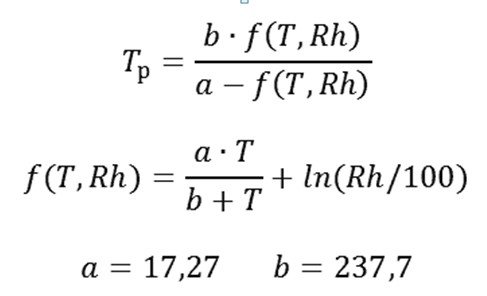

With what devices is it calculated?
So how is the dew point calculated in practice? The determination of this indicator is carried out using a psychrometer - a device consisting of two alcohol thermometers that measures humidity and air temperature. It is used mainly in laboratories these days.
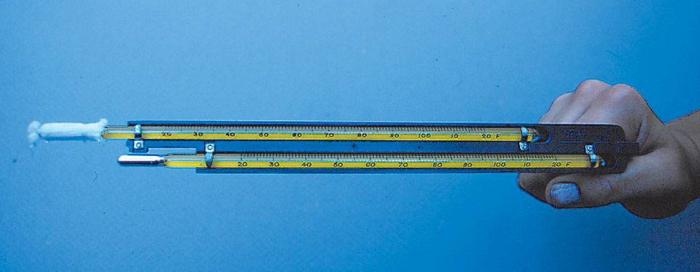

To inspect buildings, portable thermo-hygrometers are used - electronic devices, the digital display of which displays data on the relative humidity and air temperature. On some models, even the dew point is displayed.
Also, some thermal imagers have the function of calculating the dew point. At the same time, a thermogram is displayed on the screen, on which surfaces with temperatures below the dew point are visible in real time.
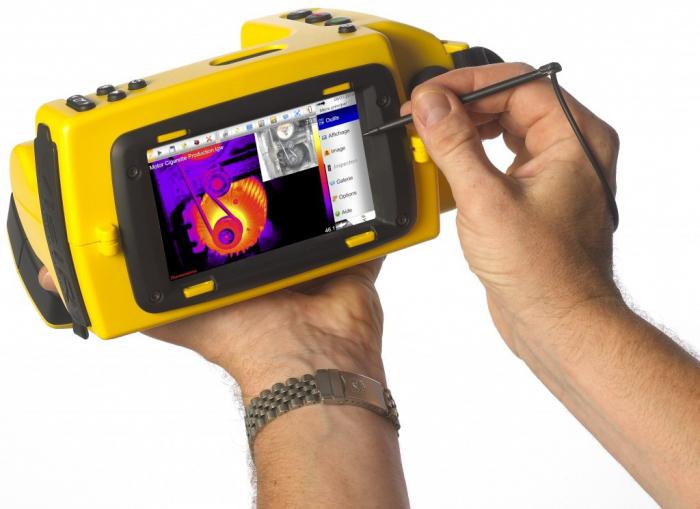

Formula for calculation
The following formula will help you calculate independently and accurately calculate the dew point:
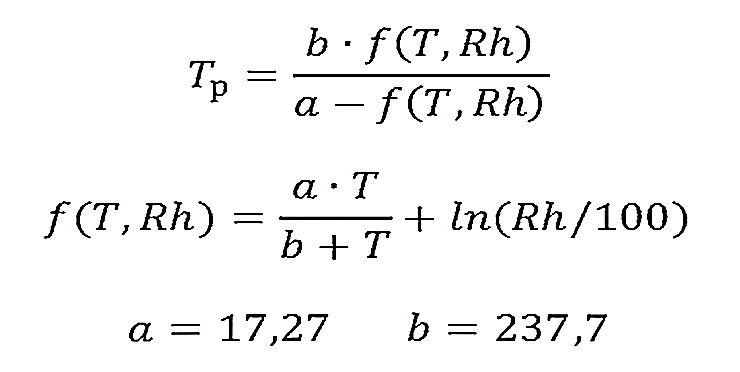

This formula can be used to calculate relative humidity from a known dew point
Here Tr means the temperature of the point itself, b and a show equal (unchanged) values, ln is the natural logarithm, T is the indoor temperature, Rh is the value of relative humidity.
As you can see from the formula, the value directly depends on the values of two parameters:
- moisture index;
- actual temperature reading.
At high relative humidity, the parameter becomes higher and closer to the level of the actual temperature. To calculate this variable, there is a table with a small step of parameters. From it you can find the required value by measuring the relative humidity and the actual temperature.


Table 1. Determination of the indicator using the ratio of influencing parameters on which the dew point depends
According to the table, we calculate that at a temperature of, for example, 19 degrees and a humidity of 50%, the condensation parameter will be 8.3 degrees.
From this video it becomes clear how thick the insulation should be for the most comfortable conditions:
How is the dew point in construction determined?
Dew point measurement is a very important stage in the construction of buildings, which must be carried out even at the stage of project development. The possibility of air condensation inside the room depends on its correctness, and, consequently, the comfort of further living in it, as well as its durability.
Any wall has a certain moisture content. That is why, depending on the wall material and the quality of the insulation, condensation can form on it. The dew point temperature depends on:
- indoor air humidity;
- its temperature.
So, using the above table, you can determine that in a room with a temperature of +25 degrees and a relative humidity of 65%, condensation will form on surfaces with a temperature of 17.5 degrees and below. A rule should be remembered: the lower the humidity in the room, the greater the difference between the dew point and the temperature in the room.
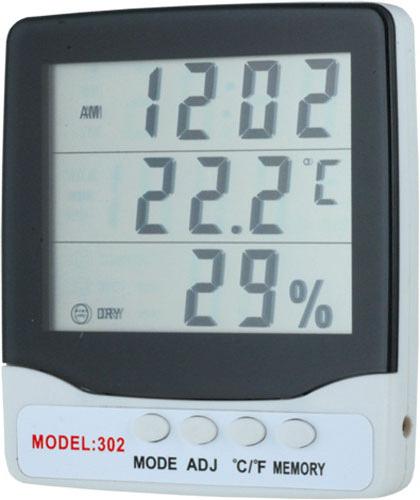

The main factors that affect the location of the dew point are:
- climate;
- indoor and outdoor temperature;
- humidity inside and outside;
- mode of living in the room;
- the quality of the functioning of the heating and ventilation systems in the room;
- wall thickness and material;
- insulation of floors, ceilings, walls, etc.
Temper-3D
The English term for the Dew point is Dew point.
The dew point is the maximum surface temperature on which condensation falls
Or like this:
If the surface is colder or equal to the dew point, then condensation will fall on it.
The lower the humidity, the lower the dew point the actual temperature. The higher the humidity, the higher the dew point and closer to the actual temperature. If the relative humidity is 100%, then the dew point is the same as the actual temperature.
For example, in a bathroom, if the shower is on (humidity is close to 100%), the mirror always “fogs up”, and vice versa, if the humidity is zero, then condensation will never fall out (in a sealed glass unit, the humidity is close to 0%, a special an adsorbent that absorbs moisture, therefore, with any cooling, it will never "fog up" from the inside).
If the glass unit is fogged up from the inside, then it is not airtight and the adsorbent can no longer absorb all the moisture.
Dew point table
As you can see from the table, dew point depends on temperature and humidity.
The left column shows the temperature, above the humidity.
For example, at 20 ° C and 55% humidity (residential sanitary standards), the dew point is 10.69 ° C. If the temperature in the apartment, for example in the corner, is below 10.69 ° C, then the corner will fog up. Humidity 55%, this is a fairly dry room (actually in a living room, especially in the kitchen, the humidity is 60% -70%, and more, ie, the wall will "flow" (the wallpaper will come off) at a higher temperature).
Dew point temperatures, for different temperatures and relative humidity in the room:
| % humidity / temperature ° C | 40% | 45% | 50% | 55% | 60% | 65% | 70% | 75% | 80% | 85% | 90% | 95% |
| -5 | -15,3 | -14,04 | -12,9 | -11,84 | -10,83 | -9,96 | -9,11 | -8,31 | -7,62 | -6,89 | -6,24 | -5,6 |
| -4 | -14,4 | -13,1 | -11,93 | -10,84 | -9,89 | -8,99 | -8,11 | -7,34 | -6,62 | -5,89 | -5,24 | -4,6 |
| -3 | -13,42 | -12,16 | -10,98 | -9,91 | -8,95 | -7,99 | -7,16 | -6,37 | -5,62 | -4,9 | -4,24 | -3,6 |
| -2 | -12,58 | -11,22 | -10,04 | -8,98 | -7,95 | -7,04 | -6,21 | -5,4 | -4,62 | -3,9 | -3,34 | -2,6 |
| -1 | -11,61 | -10,28 | -9,1 | -7,98 | -7,0 | -6,09 | -5,21 | -4,43 | -3,66 | -2,94 | -2,34 | -1,6 |
| 0 | -10,65 | -9,34 | -8,16 | -7,05 | -6,06 | -5,14 | -4,26 | -3,46 | -2,7 | -1,96 | -1,34 | -0,62 |
| 1 | -9,85 | -8,52 | -7,32 | -6,22 | -5,21 | -4,26 | -3,4 | -2,58 | -1,82 | -1,08 | -0,41 | 0,31 |
| 2 | -9,07 | -7,72 | -6,52 | -5,39 | -4,38 | -3,44 | -2,56 | -1,74 | -0,97 | -0,24 | 0,52 | 1,29 |
| 3 | -8,22 | -6,88 | -5,66 | -4,53 | -3,52 | -2,57 | -1,69 | -0,88 | -0,08 | 0,74 | 1,52 | 2,29 |
| 4 | -7,45 | -6,07 | -4,84 | -3,74 | -2,7 | -1,75 | -0,87 | -0,01 | 0,87 | 1,72 | 2,5 | 3,26 |
| 5 | -6,66 | -5,26 | -4,03 | -2,91 | -1,87 | -0,92 | -0,01 | 0,94 | 1,83 | 2,68 | 3,49 | 4,26 |
| 6 | -5,81 | -4,45 | -3,22 | -2,08 | -1,04 | -0,08 | 0,94 | 1,89 | 2,8 | 3,68 | 4,48 | 5,25 |
| 7 | -5,01 | -3,64 | -2,39 | -1,25 | -0,21 | 0,87 | 1,9 | 2,85 | 3,77 | 4,66 | 5,47 | 6,25 |
| 8 | -4,21 | -2,83 | -1,56 | -0,42 | -0,72 | 1,82 | 2,86 | 3,85 | 4,77 | 5,64 | 6,46 | 7,24 |
| 9 | -3,41 | -2,02 | -0,78 | 0,46 | 1,66 | 2,77 | 3,82 | 4,81 | 5,74 | 6,62 | 7,45 | 8,24 |
| 10 | -2,62 | -1,22 | 0,08 | 1,39 | 2,6 | 3,72 | 4,78 | 5,77 | 7,71 | 7,6 | 8,44 | 9,23 |
| 11 | -1,83 | -0,42 | 0,98 | 1,32 | 3,54 | 4,68 | 5,74 | 6,74 | 7,68 | 8,58 | 9,43 | 10,23 |
| 12 | -1,04 | 0,44 | 1,9 | 3,25 | 4,48 | 5,63 | 6,7 | 7,71 | 8,65 | 9,56 | 10,42 | 11,22 |
| 13 | -0,25 | 1,35 | 2,82 | 4,18 | 5,42 | 6,58 | 7,66 | 8,68 | 9,62 | 10,54 | 11,41 | 12,21 |
| 14 | 0,63 | 2,26 | 3,76 | 5,11 | 6,36 | 7,53 | 8,62 | 9,64 | 10,59 | 11,52 | 12,4 | 13,21 |
| 15 | 1,51 | 3,17 | 4,68 | 6,04 | 7,3 | 8,48 | 9,58 | 10,6 | 11,59 | 12,5 | 13,38 | 14,21 |
| 16 | 2,41 | 4,08 | 5,6 | 6,97 | 8,24 | 9,43 | 10,54 | 11,57 | 12,56 | 13,48 | 14,36 | 15,2 |
| 17 | 3,31 | 4,99 | 6,52 | 7,9 | 9,18 | 10,37 | 11,5 | 12,54 | 13,53 | 14,46 | 15,36 | 16,19 |
| 18 | 4,2 | 5,9 | 7,44 | 8,83 | 10,12 | 11,32 | 12,46 | 13,51 | 14,5 | 15,44 | 16,34 | 17,19 |
| 19 | 5,09 | 6,81 | 8,36 | 9,76 | 11,06 | 12,27 | 13,42 | 14,48 | 15,47 | 16,42 | 17,32 | 18,19 |
| 20 | 6,0 | 7,72 | 9,28 | 10,69 | 12,0 | 13,22 | 14,38 | 15,44 | 16,44 | 17,4 | 18,32 | 19,18 |
| 21 | 6,9 | 8,62 | 10,2 | 11,62 | 12,94 | 14,17 | 15,33 | 16,4 | 17,41 | 18,38 | 19,3 | 20,18 |
| 22 | 7,69 | 9,52 | 11,12 | 12,56 | 13,88 | 15,12 | 16,28 | 17,37 | 18,38 | 19,36 | 20,3 | 21,6 |
| 23 | 8,68 | 10,43 | 12,03 | 13,48 | 14,82 | 16,07 | 17,23 | 18,34 | 19,38 | 20,34 | 21,28 | 22,15 |
| 24 | 9,57 | 11,34 | 12,94 | 14,41 | 15,76 | 17,02 | 18,19 | 19,3 | 20,35 | 21,32 | 22,26 | 23,15 |
| 25 | 10,46 | 12,75 | 13,86 | 15,34 | 16,7 | 17,97 | 19,15 | 20,26 | 21,32 | 22,3 | 23,24 | 24,14 |
| 26 | 11,35 | 13,15 | 14,78 | 16,27 | 17,64 | 18,95 | 20,11 | 21,22 | 22,29 | 23,28 | 24,22 | 25,14 |
| 27 | 12,24 | 14,05 | 15,7 | 17,19 | 18,57 | 19,87 | 21,06 | 22,18 | 23,26 | 24,26 | 25,22 | 26,13 |
| 28 | 13,13 | 14,95 | 16,61 | 18,11 | 19,5 | 20,81 | 22,01 | 23,14 | 24,23 | 25,24 | 26,2 | 27,12 |
| 29 | 14,02 | 15,86 | 17,52 | 19,04 | 20,44 | 21,75 | 22,96 | 24,11 | 25,2 | 26,22 | 27,2 | 28,12 |
| 30 | 14,92 | 16,77 | 18,44 | 19,97 | 21,38 | 22,69 | 23,92 | 25,08 | 26,17 | 27,2 | 28,18 | 29,11 |
| 31 | 15,82 | 17,68 | 19,36 | 20,9 | 22,32 | 23,64 | 24,88 | 26,04 | 27,14 | 28,08 | 29,16 | 30,1 |
| 32 | 16,71 | 18,58 | 20,27 | 21,83 | 23,26 | 24,59 | 25,83 | 27,0 | 28,11 | 29,16 | 30,16 | 31,19 |
| 33 | 17,6 | 19,48 | 21,18 | 22,76 | 24,2 | 25,54 | 26,78 | 27,97 | 29,08 | 30,14 | 31,14 | 32,19 |
| 34 | 18,49 | 20,38 | 22,1 | 23,68 | 25,14 | 26,49 | 27,74 | 28,94 | 30,05 | 31,12 | 32,12 | 33,08 |
| 35 | 19,38 | 21,28 | 23,02 | 24,6 | 26,08 | 27,64 | 28,7 | 29,91 | 31,02 | 32,1 | 33,12 | 34,08 |
| % humidity / temperature ° C | 40% | 45% | 50% | 55% | 60% | 65% | 70% | 75% | 80% | 85% | 90% | 95% |
Original document: SP 23-101-2004, Group Zh24, OKS 91.120.01, Date of introduction 2004-06-01, APPENDIX P (reference)
Features of non-insulated walls
In many rooms, wall insulation is completely absent. In such conditions, the following options for the behavior of the dew point are possible, depending on its location:
- Between the outside surface and the center of the wall (the inside of the wall is always dry).
- Between the inner surface and the center of the wall (condensation may appear on the inner surface if the air in the region is suddenly cooled).
- On the inner surface of the wall (the wall will remain wet throughout the winter).
Dew point determination 03/05/2010
Dew point and corrosion
The dew point of air is the most important parameter for anti-corrosion protection, it indicates humidity and the possibility of moisture condensation on the surface. If the dew point of the air is higher than the temperature of the substrate (substrate, usually a metal surface), then moisture condensation will occur on the substrate. Therefore, it is important to determine the dew point during anti-corrosion work.
Protective paints and varnishes applied to a substrate with condensed moisture will have unsatisfactory adhesion to the protected surface, unless special paints and varnishes are used (see “Materials on a wet surface” in the “Protective coatings” section).
Thus, the consequence of applying protective coatings on a substrate with moisture condensation will be poor adhesion and, as a result, the appearance of a number of paintwork defects: peeling, craters, pores in the film of the paint and varnish material, as well as different shades and uneven gloss. All this leads to premature corrosion and / or fouling.
Dew point determination
Dew point values in degrees ° C for a number of situations are determined using a sling psychrometer (or other climate control devices) and special tables. First, the air temperature is determined, then the humidity, the substrate temperature, and the temperature is determined using the dew point table. As a rule, in the practice of anti-corrosion protection, it is recommended to apply protective paint and varnish coatings to a surface whose temperature is 3 degrees. above the dew point.
Dew point determination table depending on temperature and relative humidity
| Temperatureair | Dew point at relative humidity | |||||||||||||
| 30% | 35% | 40% | 45% | 50% | 55% | 60% | 65% | 70% | 75% | 80% | 85% | 90% | 95% | |
| -10aboutFROM | -23,2 | -21,8 | -20,4 | -19,0 | -17,8 | -16,7 | -15,8 | -14,9 | -14,1 | -13,3 | -12,6 | -11,9 | -10,6 | -10,0 |
| -5aboutFROM | -18,9 | -17,2 | -15,8 | -14,5 | -13,3 | -11,9 | -10,9 | -10,2 | -9,3 | -8,8 | -8,1 | -7,7 | -6,5 | -5,8 |
| 0aboutFROM | -14,5 | -12,8 | -11,3 | -9,9 | -8,7 | -7,5 | -6,2 | -5,3 | -4,4 | -3,5 | -2,8 | -2 | -1,3 | -0,7 |
| +2aboutFROM | -12,8 | -11,0 | -9,5 | -8,1 | -6,8 | -5,8 | -4,7 | -3,6 | -2,6 | -1,7 | -1 | -0,2 | -0,6 | +1,3 |
| +4aboutFROM | -11,3 | -9,5 | -7,9 | -6,5 | -4,9 | -4,0 | -3,0 | -1,9 | -1,0 | +0,0 | +0,8 | +1,6 | +2,4 | +3,2 |
| +5aboutFROM | -10,5 | -8,7 | -7,3 | -5,7 | -4,3 | -3,3 | -2,2 | -1,1 | -0,1 | +0,7 | +1,6 | +2,5 | +3,3 | +4,1 |
| +6aboutFROM | -9,5 | -7,7 | -6,0 | -4,5 | -3,3 | -2,3 | -1,1 | -0,1 | +0,8 | +1,8 | +2,7 | +3,6 | +4,5 | +5,3 |
| +7aboutFROM | -9,0 | -7,2 | -5,5 | -4,0 | -2,8 | -1,5 | -0,5 | +0,7 | +1,6 | +2,5 | +3,4 | +4,3 | +5,2 | +6,1 |
| +8aboutFROM | -8,2 | -6,3 | -4,7 | -3,3 | -2,1 | -0,9 | +0,3 | +1,3 | +2,3 | +3,4 | +4,5 | +5,4 | +6,2 | +7,1 |
| +9aboutFROM | -7,5 | -5,5 | -3,9 | -2,5 | -1,2 | +0,0 | +1,2 | +2,4 | +3,4 | +4,5 | +5,5 | +6,4 | +7,3 | +8,2 |
| +10aboutFROM | -6,7 | -5,2 | -3,2 | -1,7 | -0,3 | +0,8 | +2,2 | +3,2 | +4,4 | +5,5 | +6,4 | +7,3 | +8,2 | +9,1 |
| +11aboutFROM | -6,0 | -4,0 | -2,4 | -0,9 | +0,5 | +1,8 | +3,0 | +4,2 | +5,3 | +6,3 | +7,4 | +8,3 | +9,2 | +10,1 |
| +12aboutFROM | -4,9 | -3,3 | -1,6 | -0,1 | +1,6 | +2,8 | +4,1 | +5,2 | +6,3 | +7,5 | +8,6 | +9,5 | +10,4 | +11,7 |
| +13aboutFROM | -4,3 | -2,5 | -0,7 | +0,7 | +2,2 | +3,6 | +5,2 | +6,4 | +7,5 | +8,4 | +9,5 | +10,5 | +11,5 | +12,3 |
| +14aboutFROM | -3,7 | -1,7 | -0,0 | +1,5 | +3,0 | +4,5 | +5,8 | +7,0 | +8,2 | +9,3 | +10,3 | +11,2 | +12,1 | +13,1 |
| +15aboutFROM | -2,9 | -1,0 | +0,8 | +2,4 | +4,0 | +5,5 | +6,7 | +8,0 | +9,2 | +10,2 | +11,2 | +12,2 | +13,1 | +14,1 |
| +16aboutFROM | -2,1 | -0,1 | +1,5 | +3,2 | +5,0 | +6,3 | +7,6 | +9,0 | +10,2 | +11,3 | +12,2 | +13,2 | +14,2 | +15,1 |
| +17aboutFROM | -1,3 | +0,6 | +2,5 | +4,3 | +5,9 | +7,2 | +8,8 | +10,0 | +11,2 | +12,2 | +13,5 | +14,3 | +15,2 | +16,6 |
| +18aboutFROM | -0,5 | +1,5 | +3,2 | +5,3 | +6,8 | +8,2 | +9,6 | +11,0 | +12,2 | +13,2 | +14,2 | +15,3 | +16,2 | +17,1 |
| +19aboutFROM | +0,3 | +2,2 | +4,2 | +6,0 | +7,7 | +9,2 | +10,5 | +11,7 | +13,0 | +14,2 | +15,2 | +16,3 | +17,2 | 18,1 |
| +20aboutFROM | +1,0 | +3,1 | +5,2 | +7,0 | +8,7 | +10,2 | +11,5 | +12,8 | +14,0 | +15,2 | +16,2 | +17,2 | +18,1 | +19,1 |
| +21aboutFROM | +1,8 | +4,0 | +6,0 | +7,9 | +9,5 | +11,1 | +12,4 | +13,5 | +15,0 | +16,2 | +17,2 | +18,1 | +19,1 | +20,0 |
| +22aboutFROM | +2,5 | +5,0 | +6,9 | +8,8 | +10,5 | +11,9 | +13,5 | +14,8 | +16,0 | +17,0 | +18,0 | +19,0 | +20,0 | +21,0 |
| +23aboutFROM | +3,5 | +5,7 | +7,8 | +9,8 | +11,5 | +12,9 | +14,3 | +15,7 | +16,9 | +18,1 | +19,1 | +20,0 | +21,0 | +22,0 |
| +24aboutFROM | +4,3 | +6,7 | +8,8 | +10,8 | +12,3 | +13,8 | +15,3 | +16,5 | +17,8 | +19,0 | +20,1 | +21,1 | +22,0 | +23,0 |
| +25aboutFROM | +5,2 | +7,5 | +9,7 | +11,5 | +13,1 | +14,7 | +16,2 | +17,5 | +18,8 | +20,0 | +21,1 | +22,1 | +23,0 | +24,0 |
| +26aboutFROM | +6,0 | +8,5 | +10,6 | +12,4 | +14,2 | +15,8 | +17,2 | +18,5 | +19,8 | +21,0 | +22,2 | +23,1 | +24,1 | +25,1 |
| +27aboutFROM | +6,9 | +9,5 | +11,4 | +13,3 | +15,2 | +16,5 | +18,1 | +19,5 | +20,7 | +21,9 | +23,1 | +24,1 | +25,0 | +26,1 |
| +28aboutFROM | +7,7 | +10,2 | +12,2 | +14,2 | +16,0 | +17,5 | +19,0 | +20,5 | +21,7 | +22,8 | +24,0 | +25,1 | +26,1 | +27,0 |
| +29aboutFROM | +8,7 | +11,1 | +13,1 | +15,1 | +16,8 | +18,5 | +19,9 | +21,3 | +22,5 | +22,8 | +25,0 | +26,0 | +27,0 | +28,0 |
| +30aboutFROM | +9,5 | +11,8 | +13,9 | +16,0 | +17,7 | +19,7 | +21,3 | +22,5 | +23,8 | +25,0 | +26,1 | +27,1 | +28,1 | +29,0 |
| +32aboutFROM | +11,2 | +13,8 | +16,0 | +17,9 | +19,7 | +21,4 | +22,8 | +24,3 | +25,6 | +26,7 | +28,0 | +29,2 | +30,2 | +31,1 |
| +34aboutFROM | +12,5 | +15,2 | +17,2 | +19,2 | +21,4 | +22,8 | +24,2 | +25,7 | +27,0 | +28,3 | +29,4 | +31,1 | +31,9 | +33,0 |
| +36aboutFROM | +14,6 | +17,1 | +19,4 | +21,5 | +23,2 | +25,0 | +26,3 | +28,0 | +29,3 | +30,7 | +31,8 | +32,8 | +34,0 | +35,1 |
| +38aboutFROM | +16,3 | +18,8 | +21,3 | +23,4 | +25,1 | +26,7 | +28,3 | +29,9 | +31,2 | +32,3 | +33,5 | +34,6 | +35,7 | +36,9 |
| +40aboutFROM | +17,9 | +20,6 | +22,6 | +25,0 | +26,9 | +28,7 | +30,3 | +31,7 | +33,0 | +34,3 | +35,6 | +36,8 | +38,0 | +39,0 |
An example of calculating the minimum permissible temperature of a metal (concrete) surface: at a temperature of +20 ° C and a relative humidity of 50%, the dew point is +8.7 ° C, then the minimum permissible substrate temperature is + 8.7 + 3 = +11.7 ° C.
The specialists of PROMATEKH LLC carry out full technological support of the supplied materials, including the determination of climatic parameters in the process of anti-corrosion work.
How to properly insulate the wall?
In an insulated wall, the dew point can be located in different places of the insulation, which depends on a number of factors:
- The thermal insulation properties of the insulation decrease as the level of its moisture increases, since water is an excellent conductor of heat.
- The presence of insulation defects and gaps between the insulation and the wall surface creates good conditions for the formation of condensation.
- Dew drops significantly reduce the thermal insulation properties of the insulation, and are also an aid for the development of fungal colonies.
Thus, one should understand the risk of using materials that allow moisture to pass through walls for wall insulation, since they are susceptible to loss of heat-shielding qualities and gradual destruction.
In addition, be sure to pay attention to the ability of the materials chosen for wall insulation to resist ignition. It is better to opt for materials with an organic matter content of less than 5%. They are considered non-combustible and are most suitable for insulating living quarters.
How to solve the problem with the emerging dew point?
On the walls of a building, there are several possible places where a dew point can appear:
- At the outer surface of the wall... Here, the probability of this parameter appearing is minimal. The inner wall usually remains dry.
- Closer to the inner surface of the wall... There is a high risk of condensation in a situation when a sharp cold snap sets in on the street.
- On the inner wall of the building... The dew point appears here on rare occasions. If it does arise, then none of the measures you have taken will help get rid of it. It remains only to accept that the walls will be slightly damp during the winter.
In such cases, to solve the problem, you can add a vapor barrier to the wall surface. This will ensure that water vapor is retained and it will not pass through the walls into the room. And this will eliminate the occurrence of a dew point on the surface of the wall and ceiling surface.
External wall insulation
The ideal option for protecting a room from dampness and cold is external wall insulation (provided that it is made in compliance with technology).
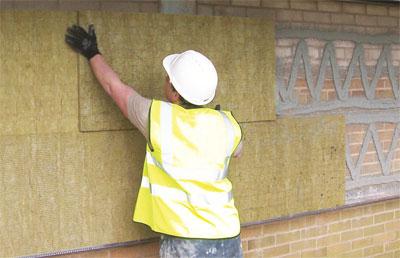

In the event that the thickness of the insulation is chosen optimally, the dew point will be in the insulation itself. The wall will remain absolutely dry throughout the entire cold period, even with a sharp cold snap, the dew point will not reach the inner surface of the wall.
If the thickness of the insulation has not been calculated correctly, some problems may arise. The dew point will move to the boundary between the insulation material and the outside of the wall. Condensation can form in the cavities between the two materials and moisture can accumulate. In winter, when the temperature drops below zero, the moisture will expand and turn into ice, contributing to the destruction of thermal insulation and partly of the wall. In addition, the constant humidity of the surfaces will lead to the formation of mold.
In case of complete non-observance of the technology and gross errors in calculations, it is possible to displace the dew point to the inner surface of the wall, which will lead to the formation of condensation on it.
What factors influence the dew point?
An indicator such as the dew point is influenced by several factors:
- One of the main ones is the thickness of the walls of the room.... Another equally important one is what materials are used during the thermal insulation of the walls of the building. Temperature is also significant. It may vary depending on the area where the building is located. The temperature coefficient in the northern territories will differ from those in the south.
- Another important factor is humidity.... If the airspace contains moisture, then the more there is, the higher the dew point will be.
In order to have an accurate idea of what a dew point is and what effect various factors can have on it, consider this factor with examples:
- Indoor insulated wall... In this case, the dew point will move. This will happen under the influence of outdoor weather conditions. If the weather outside is stable and there are no sharp fluctuations in temperature, then the dew point will be located as close as possible to the outside wall. In this case, there will be no negative impact on the room itself. In the event that a sharp cold snap occurs, then the dew point will gradually move to the inner part of the wall. And this can lead to the fact that the room will be saturated with condensation, as a result of which there will be a slow wetting of the wall surfaces.
- Wall insulated from the outside... The dew point here will be located inside the wall in the thermal insulation layer. When choosing a material for insulating structures, it is necessary to pay attention to this factor and correctly approach the calculation of the thickness of the heat-insulating material.
- Wall insulated from the inside... Here the dew point is located between the insulation and the center of the wall. This option is not the best, because if a high level of humidity prevails in the outside air, then with a sharp cold snap, the dew point will move to the junction between the insulation and the wall. And this can be reflected in the most negative way on the wall. The owner can resort to internal insulation of structures only if there is an effective heating system inside the house, which is able to provide the same temperature regime in each room of the house.
In the event that weather conditions are not taken into account when carrying out repair work in the house, then it is almost impossible to eliminate the problem. The only correct decision is to remove everything that was done, and then carry out all the work again, but already correctly, taking into account the dew point. However, this will lead to high costs for the owners of the building.
Internal wall insulation
Insulating the wall from the inside is initially not the best option. If the insulation layer is thin, the dew point will be at the border of the insulation material and the inner wall surface. Warm air in a room with a thin layer of thermal insulation will practically not reach the inner side of the wall, leading to the following consequences:
- high probability of getting wet and freezing of the wall;
- moistening and, as a result, the destruction of the insulation itself;
- excellent conditions for the development of mold colonies.
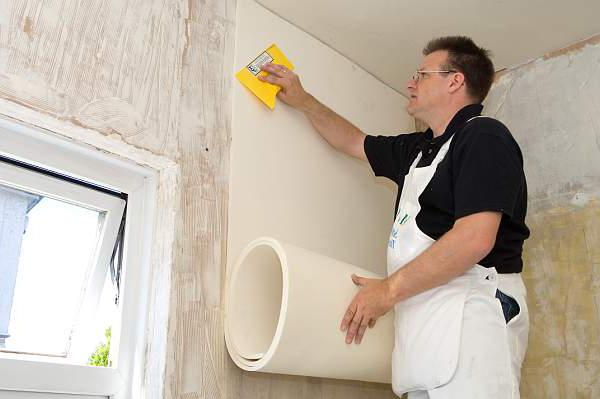

However, this method of warming a room can also be effective. To do this, you must comply with some prerequisites:
- the ventilation system must comply with regulations and prevent excessive humidification of the ambient air.
- the thermal resistance of the fence structure, according to regulatory requirements, should not exceed 30%.
Dew point determination and calculation
A person living in a house in which high humidity prevails in the interior is faced with great problems. The presence of condensation leads to health problems. There is a high risk of contracting a disease such as asthma. In addition, condensation has a negative effect on building structures, shortening their service life.
If the humidity level inside the house is high, then mold forms on the walls and ceilingwhich is difficult to get rid of. In such cases, you have to take drastic measures - to replace the wall and ceiling surface. This is the only way to get rid of harmful microorganisms.
To avoid these unpleasant moments, it is necessary to calculate the dew point in advance. Thus, you can find out whether it makes sense to carry out repair work in a separate building, to insulate the walls.
It is worth saying that each building has its own individual dew point... This means that the work on its calculation will be carried out with certain differences.
Before proceeding with the calculation of this parameter, the following factors must be taken into account:
- climatic conditions in a particular region;
- the thickness of the walls of the building;
- the material from which they are made;
- the presence of strong winds.
During construction, the developer must ensure that the materials used during the construction do not increase humidity and do not form a dew point. Only a specialist can correctly measure the dew point. If the dew point in the premises of the house is high, then the specialist will conclude that the insulation of the building was performed incorrectly.
This answer can be considered partly correct, since with proper insulation, the dew point moves, as a result, this indicator changes. In addition, repairs carried out using the technology affect the appearance of condensation on the walls.
What is the risk of ignoring condensation in construction?
In winter, when the temperature is almost constantly below zero degrees, warm air inside the room, in contact with any cold surface, is supercooled and falls on its surface in the form of condensation. This occurs provided that the temperature of the corresponding surface is below the dew point calculated for the given temperature and humidity.
If condensation occurs, the wall is damp almost always at a lower temperature. The result is the formation of mold and the development of a wide variety of harmful microorganisms in it. Subsequently, they move into the surrounding air, which leads to various diseases of the residents, who are often in the room, including asthmatic disorders.
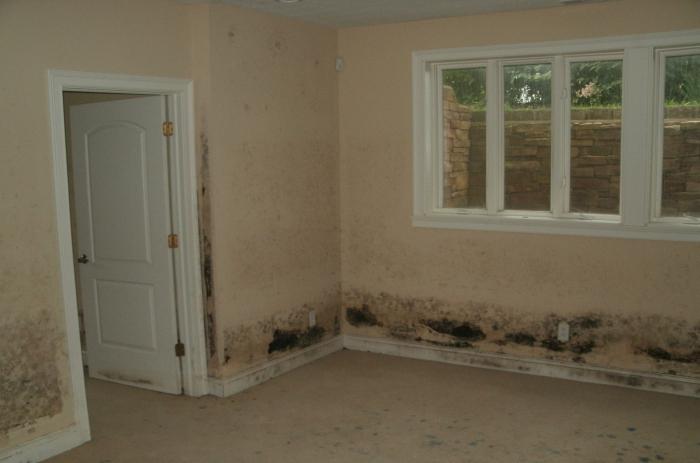

In addition, houses affected by mold and fungal colonies are extremely short-lived. The destruction of the building is inevitable, and this process will begin precisely from the damp walls. That is why it is extremely important to make correctly all calculations regarding the dew point even at the design and construction stage of the building. This will allow you to make the right choice regarding:
- wall thickness and material;
- the thickness and material of the insulation;
- method of wall insulation (internal or external insulation);
- selection of ventilation and heating systems that can provide an optimal microclimate in the room (the best ratio of relative humidity and temperature).
You can calculate the dew point in the wall yourself. In this case, one should take into account the peculiarities of the climatic region of residence, as well as other nuances given earlier. But still, it is better to contact specialized construction organizations that are engaged in such calculations in practice. And the responsibility for the correctness of the calculations will lie not with the client, but with the representatives of the organization.
Determination of the dew point in the wall
The main indicators required for the calculation are indoor humidity and temperature. To determine them, it is used household psychrometer.
This unit measures both indicators. His work is based on a thermometer combination cooled by a humidifier. The higher the percentage of humidity, the higher the thermometer readings.
For construction needs, electronic devices have been developed that instantly calculate the values of temperature and humidity and display the values on the display. Also, some models have the function of calculating the dew point. thermal imagers.
There are several dew point calculation methods:
- according to the formula;
- according to the table;
- using an online calculator.
Calculation by formula
Dew point T calculation using the formula, it is carried out with known indicators of humidity and temperature. The final figure will be considered approximate due to neglect of some factors.
Where you need to pre-calculate f:
t is room temperature oC, φ is humidity%, and 17.27 and 237.7 are constant values.
For example, for a room, a humidity of 60% and a room temperature of 21 oC are normal, the calculation will look like in the following way:
Thus, the dew point calculation looks like this:
Condensation temperature is 12.92 oC. Thus, the insulation of the walls from the outside prevent losses heat from the room and freezing of the wall.
Calculation according to the table
The dew point can be determined using a table created by specialists. In order to determine the dew point, for example for 21oC at 60% humidity, we are looking for line intersection temperature with a humidity column and we get a value of 12.9 oC. Table 1... Dew point definitions.
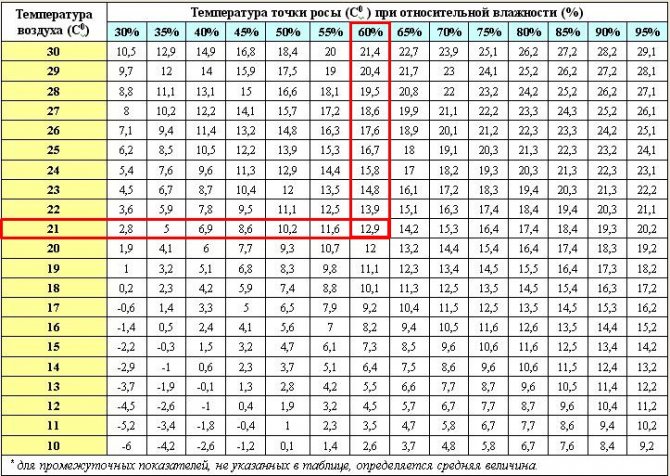

Calculation using an online calculator
You can also calculate the dew point value using online calculator on construction sites and forums. Entering the temperature and humidity values, we again get a value of 12.92 oC.
How to work with the online calculator for calculating the dew point in the wall, look at the video:

